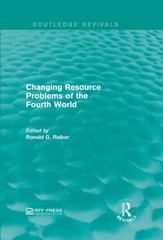Question
An economy is populated by a representative household with the following preferences: u(c) + v(l), where consumption is c and l is leisure. The household
An economy is populated by a representative household with the following preferences: u(c) + v(l), where consumption is c and l is leisure. The household has 1 unit of time so its budget is c = w(1 l) , where w is the wage rate and is a tax that the government collects. Notice that is a lump-sum tax, not an income tax: the household must pay the same amount regardless of how much income it earns.
Set up the Lagrangian for the household's optimisation problem and find first-order conditions. 2. Use the budget constraint to replace c in the first-order condition to obtain a single equation that relates the household's choice of l to w and . 3. Suppose that the government uses all the tax revenue to hire emergency front-line health workers to help during the COVID-19 pandemic. The government pays these workers the prevailing wage rate. How much time (in units) can the government afford to purchase from the workers? Denote this number by m. 4. Now suppose that, instead of taxing citizens to hire health-care workers, the govern- ment imposes compulsory health-care training and service: the representative house- hold has to dedicate m units of time to administer vaccines, unpaid. The rest of their time is available to use as they please and no taxes are imposed. Set up the household's optimisation problem under this policy. 5. Show that the representative household's level of consumption, leisure, hired health- care labour and compulsory health-care labour are the same under both policies. Ex- plain
Step by Step Solution
There are 3 Steps involved in it
Step: 1

Get Instant Access to Expert-Tailored Solutions
See step-by-step solutions with expert insights and AI powered tools for academic success
Step: 2

Step: 3

Ace Your Homework with AI
Get the answers you need in no time with our AI-driven, step-by-step assistance
Get Started


